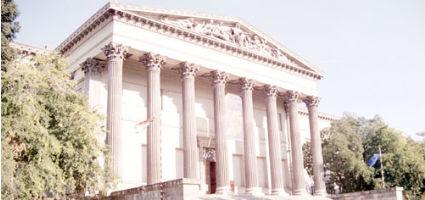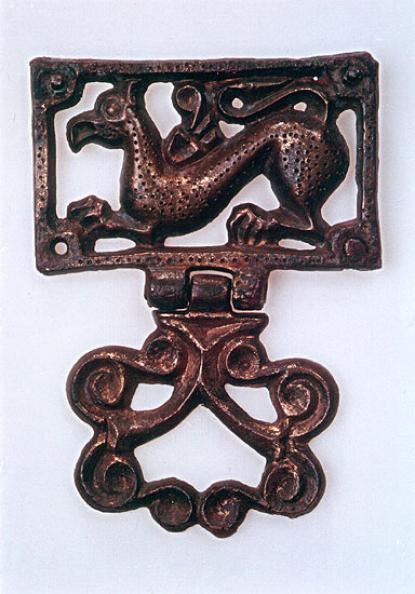2026. January 7. Wednesday
Hungarian National Museum - Budapest
 |
Address: 1088, Budapest Múzeum körút 14-16.
Phone number: (1) 338-2122
E-mail: info@hnm.hu
Opening hours: Tue-Sun 10-18
|
The exhibition has closed for visitors.
2002.03.26. - 2002.06.30.
Museum tickets, service costs:
|
Ticket for adults
|
1100 HUF
|
|
|
Ticket for students
|
550 HUF
|
|
|
Ticket for soldiers
|
550 HUF
|
|
|
Ticket for pensioners
|
550 HUF
|
|
|
Ticket for families
(2 adults + children)
|
1150 HUF
|
/ family
|
|
Individual guide
|
400 HUF
|
/ capita
|
|
Group guide
(max. 5 people)
|
1800 HUF
|
/ group
|
|
Group guide
(11-15 people)
|
6000 HUF
|
/ group
|
|
Group guide
(max. 15 people)
|
5500 HUF
|
/ group
|
|
Group guide
(16-25 people)
|
9700 HUF
|
/ group
|
|
Group guide
(1-5 people)
|
1500 HUF
|
/ capita
|
|
Group guide
(6-10 people)
|
13000 HUF
|
/ group
|
|
Group guide
(11-15 people)
|
16000 HUF
|
/ group
|
|
Group guide
(16-25 people)
|
24000 HUF
|
/ group
|
|
Group guide for students
(max. 25 people)
|
4500 HUF
|
/ group
|
|
Group guide for students
(max. 15 people)
|
6000 HUF
|
/ group
|
|
Group guide for students
(max. 25 people)
|
12000 HUF
|
/ group
|
The treasure found in Nagyszentmiklós made up of 23 golden utensil belongs to the Kunsthistorisches Museum in Wien. In the 200th years of the foundation of the Hungarian National Museum, the dishes will be displayed in the National Museum with the support of the National Cultural Heritage.

On 3, July 1799 in Bánát, in Torontál County, in Nagyszentmiklós a farmer found golden jugs, dishes, and cups. The utensil was moved to Budapest with the help of local tradesmen and a Greek wool merchant who lived in Wien. In Pest, the utensil was moved to János Boráros, the prefect of the town. The treasure was transported to Wien in an adventures way. In Wien the Emperor Franz announced the treasures part of the Imperial and Royal Treasury.
Hundreds of scientists and amateurs studied the treasure of Nagyszentmiklós in the last 200 years. The questions did not change from the beginning: when were the dishes made, who made them, who owned them, why were they made in odd number, who and why hid them?
There were many ideas and explanations, but one that answered all the questions was never found. The scientific studies dated them to three different periods: according to one idea the treasure was made in the 8th century by the Avars, another idea claimed that Bulgarians made the utensil in the 9th century, and according to another study the Magyars of the Original Settlement made the treasure in the 10th century.
The exhibition in the Hungarian National Museum endeavors to display the result of the studies as well as the cultural environment of Nagyszentmiklós.
Éva Garam collected objects that seem to prove the connection between the treasure of Nagyszentmiklós and the Avar culture. Besides the treasure of Nagyszentmiklós we show objects that preserved the memory of the Avar settlements selected from the findings of 16 Hungarian and 8 foreign museums. By showing them, we try to help the visitors to imagine the spiritual environment of which the treasure was probably part of.

On 3, July 1799 in Bánát, in Torontál County, in Nagyszentmiklós a farmer found golden jugs, dishes, and cups. The utensil was moved to Budapest with the help of local tradesmen and a Greek wool merchant who lived in Wien. In Pest, the utensil was moved to János Boráros, the prefect of the town. The treasure was transported to Wien in an adventures way. In Wien the Emperor Franz announced the treasures part of the Imperial and Royal Treasury.
Hundreds of scientists and amateurs studied the treasure of Nagyszentmiklós in the last 200 years. The questions did not change from the beginning: when were the dishes made, who made them, who owned them, why were they made in odd number, who and why hid them?
There were many ideas and explanations, but one that answered all the questions was never found. The scientific studies dated them to three different periods: according to one idea the treasure was made in the 8th century by the Avars, another idea claimed that Bulgarians made the utensil in the 9th century, and according to another study the Magyars of the Original Settlement made the treasure in the 10th century.
The exhibition in the Hungarian National Museum endeavors to display the result of the studies as well as the cultural environment of Nagyszentmiklós.
Éva Garam collected objects that seem to prove the connection between the treasure of Nagyszentmiklós and the Avar culture. Besides the treasure of Nagyszentmiklós we show objects that preserved the memory of the Avar settlements selected from the findings of 16 Hungarian and 8 foreign museums. By showing them, we try to help the visitors to imagine the spiritual environment of which the treasure was probably part of.
